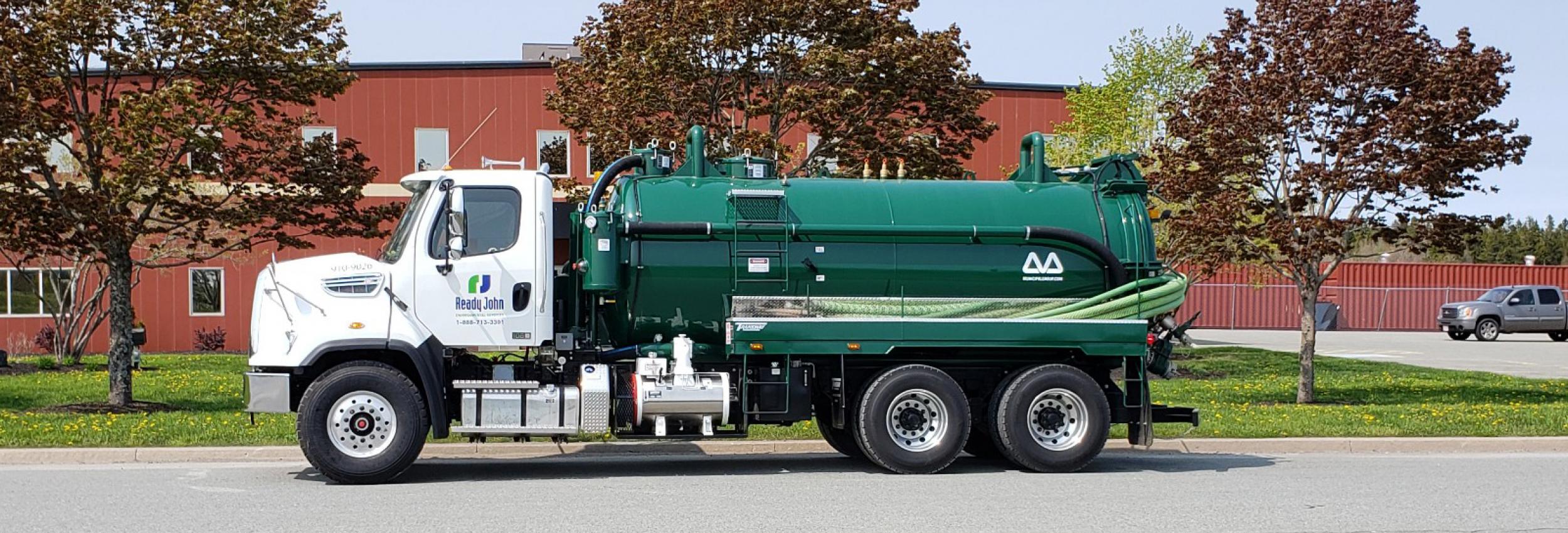Septic Tank Cleaning
Regular septic tank maintenance is important and will help you avoid costly repairs. To this end, Ready John offers variety of septic-related services, from septic pumping to holding tank rentals (ranging from 200 gallons to 1500 gallons). Below is an important list of questions and answers regarding septic systems and care. As always, please contact our team for any guidance or to book an appointment.
How Does a Septic System Work?
- A typical septic system has four main components: a pipe from the home, a septic tank, a drainfield, and the soil. Microbes in the soil digest or remove most contaminants from wastewater before it eventually reaches groundwater.
- The septic tank is a buried, watertight container typically made of concrete, fibreglass, or polyethylene. It holds the wastewater long enough to allow solids to settle out (forming sludge) and oil and grease to float to the surface (as scum).
- It also allows partial decomposition of the solid materials. Compartments and a T-shaped outlet in the septic tank prevent the sludge and scum from leaving the tank and traveling into the drainfield area. Screens are also recommended to keep solids from entering the drainfield.
- The wastewater exits the septic tank and is discharged into the drainfield for further treatment by the soil.
- Microorganisms in the soil provide final treatment by removing harmful bacteria, viruses, and nutrients.
How do I maintain my septic system?
- Pump frequently
- You should have your septic system inspected at least every 3 years by a professional and your tank pumped as necessary (generally every 3 to 5 years).
Why should I maintain my septic system?
- A key reason to maintain your septic system is to save money! Failing septic systems are expensive to repair or replace, and poor maintenance is often the culprit. Having your septic system inspected (at least every 3 years) is a bargain when you consider the cost of replacing the entire system. Your system will need pumping every 3 to 5 years, depending on how many people live in the house and the size of the system. An unusable septic system or one in disrepair will lower your property’s value and could pose a legal liability.
How many covers are on my tank and which one should be exposed?
- Depending on the type of tank, it could have 1, 2 or 3 covers. Tanks with 3 covers need the middle cover exposed but to get the best cleaning, we suggest uncovering the whole top of the tank. Tanks with 2 covers on each end would only need 1 uncovered.
Will Ready John locate and dig up my tank cover for me?
- No, Ready John will give advise to help the customer locate their tank but we do not dig up tanks as part of our service. The tank cover is to be exposed when we arrive to pump the tank.
Is there anything I can do to help keep my tank and field working properly?
- Yes, Ready John sells a product called Pro Pump, which is a bottle of live bacteria that is poured into the tank after pumping to start the bacteria working again and each month after a packet is flushed down your toilet to keep your tank working properly. Septic systems need bacteria in order to work and it is best to avoid using a lot of bleach and antibacterial products which kills the bacteria in your tank.
How often should I have my septic tank pumped.
- A general rule of thumb is every 3 years for a family of 4 people.
Weight: 0
